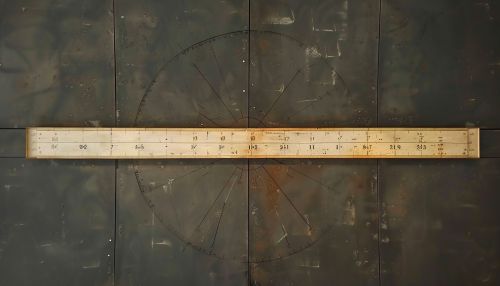Real number
Definition
A real number is a value that represents a quantity along a continuous line. The adjective real in this context was introduced in the 17th century by René Descartes, who distinguished between real and imaginary roots of polynomials. The real numbers include all the rational numbers, such as the integer -5 and the fraction 4/3, and all the irrational numbers, such as √2 (1.41421356..., the square root of two, an irrational algebraic number) and π (3.14159265..., a transcendental number).


Properties
Real numbers can be thought of as points on an infinitely long number line. This line is horizontally partitioned into two halves, negative and positive real numbers, separated by zero - the neutral element of addition. The properties of real numbers are generalized by the real number system, which includes operations of addition, subtraction, multiplication, and division.
Order Properties
Real numbers are ordered in that they can be compared in relative size. For any two real numbers, one and only one of the following is true: the first number is greater than the second (symbolically, a > b), the first number is less than the second (a < b), or the two are equal (a = b).
Field Properties
The real numbers form a field, which means that addition and multiplication are both commutative and associative, and multiplication distributes over addition. The existence of multiplicative inverses (except for zero) and additive inverses for all real numbers are also properties of fields.
Completeness
The real numbers are complete, which means that if a sequence of real numbers is bounded, then it has a least upper bound. This property is the basis for the mathematical definition of a real number and is used in the proof of various theorems.
Construction
There are several ways to construct the real numbers. The most common methods are through Dedekind cuts, Cauchy sequences, or decimal representations.
Dedekind Cuts
A Dedekind cut is a partition of the rational numbers into two non-empty sets A and B, such that all elements of A are less than all elements of B, and A contains no greatest element.
Cauchy Sequences
A Cauchy sequence is a sequence whose terms become arbitrarily close together as the sequence progresses. Real numbers can be defined as equivalence classes of Cauchy sequences of rational numbers.
Decimal Representations
Real numbers can also be defined via their decimal representations. For example, the number 2.71828... is the real number that is the limit of the sequence (2, 2.7, 2.71, 2.718, 2.7182, ...).
Extensions and Generalizations
The real numbers can be extended to the complex numbers, using the imaginary unit i (which is defined as the square root of -1). This allows for the solution of equations, such as x^2 = -1, which have no solution among the real numbers.
The real numbers can also be generalized to higher dimensions, forming the vector spaces known as Euclidean spaces. These spaces, which include the real numbers themselves (as a 1-dimensional space), the complex numbers (as a 2-dimensional space), and more generally, n-dimensional space for any natural number n, are fundamental in both pure and applied mathematics.
